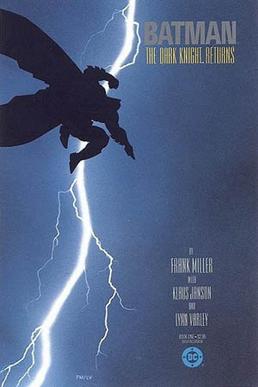 Image via Wikipedia
Image via WikipediaMost writers want to create the next Harry Potter or Holden Caufield or Tom Sawyer – a character who resonates with the public, transcends race, class, and gender, and appeals to subsequent generations of readers. In short, an icon.
Recently, TNT aired The Dark Knight – a three-hour blockbuster and the most recent in a long string of movies featuring a perennial American icon, Batman. While watching the film for the fourth time, I became struck by how fresh it remains and how it reinterprets the character – keeping his essential qualities intact while updating them for a modern audience.
Batman also continues to star in multiple comic books each month, was the subject of a much derided (but still famous) 1960s TV series, and shows up each year as a costume for kids at Halloween.
Not bad for a character who dresses up like a bat, beats up bad guys, and is 72 years old.
So, what makes Batman an icon? Here are three ideas:
1. Batman has no powers. He’s a self-made hero – someone who relies on his training, hard work, and wits. This idea resonates with many Americans who see themselves as independent hard workers.
Most kids know they will never grow up to be Superman or Green Lantern (unless an alien with a powerful ring happens to fall from the sky into their back yards), but, with enough determination, they could become Batman.
One aspect fans overlook, however, is that Batman (Bruce Wayne) was born wealthy. He has the resources to train, to create the Bat costume and gadgets, to hide in a secret but well-equipped Batcave, and to employ a butler to look after him.
But, in a way, Batman’s wealth appeals to another American notion: the idea that we are, as David Brooks put it, “pre-rich.” All we have to do is win the lottery, work hard, invest, etc., etc.
2. Batman is a loner. Superman has Lois Lane. Other characters have or have had steady girlfriends, wives, and soul mates. But Batman, throughout his long history, has never had a significant other. Sure, a number of women have come and gone (Julie Madison, Vicki Vale, Silver St. Cloud, to name a few), but none have come to the fore as the one he is destined to be with – except possibly Selina Kyle (Catwoman), but her status on the opposite side of the law precludes Batman from having a long-term relationship with her.
Instead of a regular love interest, Batman has a core group of “buddies” – Robin/Nightwing, Alfred, Commissioner Gordon. They share in his mission but are not allowed to get too close. Think this would be a detriment to the character's appeal? Next time you're with a group of guys, listen to them talk about sports, their cars, their jobs, movies, or anything else that is external to their own lives. Many men, in particular, like to keep that personal distance and to focus on the "task" at hand.
3. One word: gadgets. Batmobiles. Batarangs. The Utility Belt. Let’s face it: gadgets appeal to us. Who wouldn’t like to be able to pull out just the right tool for the job, the right item for the occasion? Plus, Batman’s gadgets are always cool looking. In short, Batman is James Bond times ten.
Batman’s reliance on gadgets also separates him from other heroes, such as Superman (who has no gadgets) or Green Lantern or Spider-Man (who rely on one gadget each – power ring and web shooters, respectively). The only major super-hero who comes close to Batman in terms of gadgets is Iron Man, who wears a suit of amour loaded with technological wonders.
But Batman’s gadgets seem to have a more working class appeal. They rest in his utility belt until he needs them. And when he uses them (such as the batarang), he grips them like a hammer.
There are many other reasons why Batman’s appeal has endured – the tragedy of losing his parents at a young age, his outlaw status, to name two – but these three factors resonate strongly in The Dark Knight.
And there are many icons who appeal to us for other reasons. Superman, as mentioned above, is virtually Batman’s opposite in every way.
So, what makes an icon? Tapping into that deep reservoir of emotions and associations that make us who we are and who we want to be.
Who is your favorite icon and why?


3 comments:
I have always loved the superheros. To date my favorite icon isn't your average superhero, but Maya Angelou. She has endured and overcome so many obstacles, it's amazing. The human spirit and determination makes us modern day heroes. When you can fall and get back up, and use the utility belt that is the brain, we all can do amazing things. Thanks for sharing.
I've never been a huge fan of super hero movies, comic books, etc., but I did always like Batman best. My preference probably leans on your first criteria for creating an icon - he was just a regular guy with no super powers. As such, he also was a darker character and more conflicted. In essence, he was more human.
Kristi - Good point. Real people can be icons, too. And they are not limited to famous authors or other celebrities.
Dave - Ironically, Batman was never one of my favorite characters for precisely that reason: I wanted to fly, to shoot lightning bolts from my fingers, etc.
But the "more human" aspect certainly resonates with readers and movie viewers. I think this aspect is one of the reasons why the Bat-films have generally been among the best super-hero films.
Post a Comment